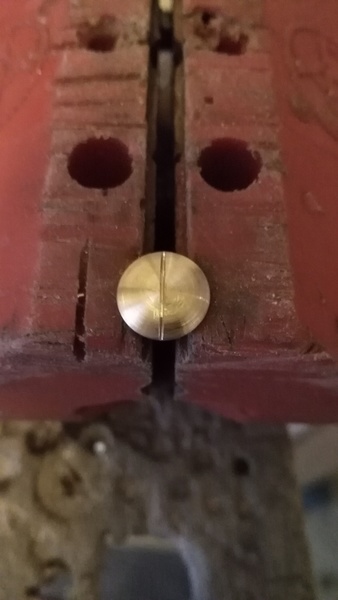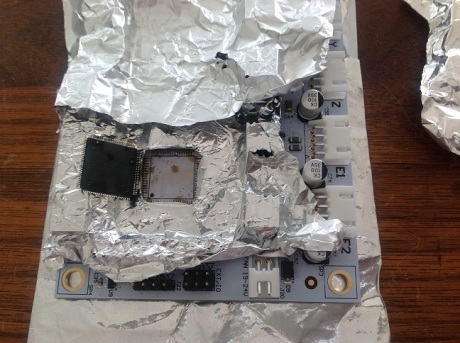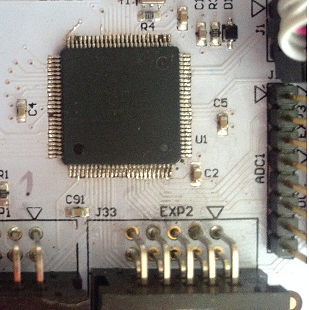I am the proud owner of an umbrella-like design lamp. Unfortunately, it was hanging fairly low, and every now and then I would accidentally hit it with something. After a few years, 3 screws had broken off, and the screws were custom made…
Having postponed the repair job, I finally summed up the will to make new screws.
Hnnnnnn. There. Now or never!
First I drilled some 4 mm holes in a few pieces of brass. Then hard-soldered M4 thread onto them.
Putting the screws in a dremel and rotating it, I could make a perfect circle, that could be used as a template for sawing.

Then I put it back in the dremel, and using a file I shaped it into a slightly rounded form.

Next stop: creating a slot for the screwdriver, using a small metal saw.

Rinse and repeat 2 x. The brass color is not really noticeable. See?

I also shortened the rod to reduce the height, thus reducing collision risks, but now the umbrella will not go up all the way any more. Not really an issue, though. Let’s hope none of the glass bulbs will break: I have not mastered the skill of blowing and sand-blasting glass .




![IMG_20160410_154835[1]](https://fnorkn.files.wordpress.com/2016/04/img_20160410_1548351.jpg?w=460)


 .
.






